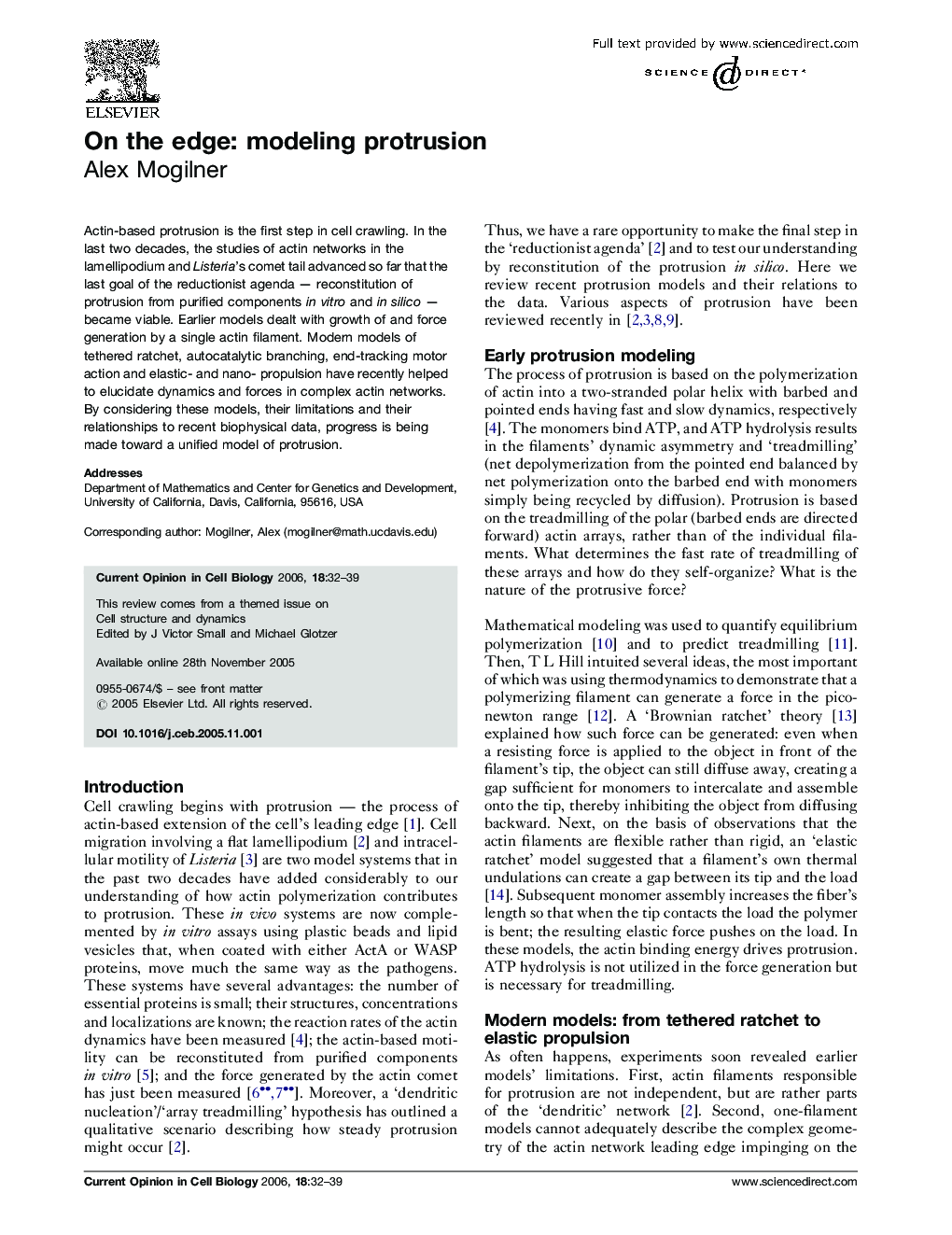| Article ID | Journal | Published Year | Pages | File Type |
|---|---|---|---|---|
| 2170395 | Current Opinion in Cell Biology | 2006 | 8 Pages |
Actin-based protrusion is the first step in cell crawling. In the last two decades, the studies of actin networks in the lamellipodium and Listeria's comet tail advanced so far that the last goal of the reductionist agenda — reconstitution of protrusion from purified components in vitro and in silico — became viable. Earlier models dealt with growth of and force generation by a single actin filament. Modern models of tethered ratchet, autocatalytic branching, end-tracking motor action and elastic- and nano- propulsion have recently helped to elucidate dynamics and forces in complex actin networks. By considering these models, their limitations and their relationships to recent biophysical data, progress is being made toward a unified model of protrusion.
